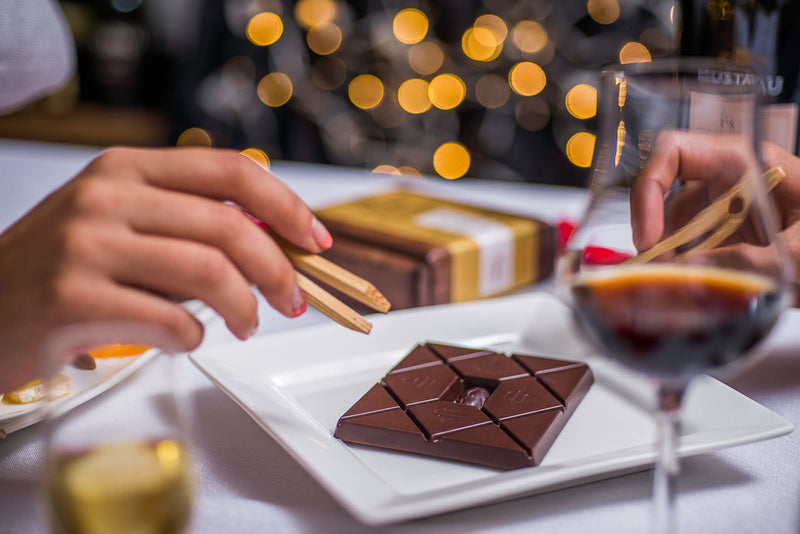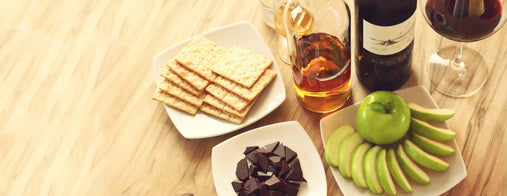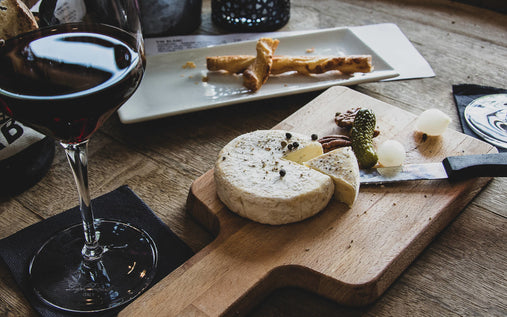
20th of May 2022
Sharon Terenzi is a chocolate blogger that has been reporting the latest news and trends in the chocolate industry since 2014. She is also an international chocolate judge, freelance writer, and private consultant. Connect with her and other chocolate lovers around the world through her website The Chocolate Journalist or Instagram.
Want to learn the secrets of people that make tasting chocolate their job?
These professionals have been trained to sharpen their senses, eliminate bias, and analyze the sensorial attributes of chocolate in the most objective way possible. Learning how to train your palate like a professional chocolate taster will allow you to tap into a whole new level of appreciation for chocolate in all of its nuances and complexities.
Turn yourself into a conscious and knowledgeable chocolate lover with these tips on how to train your palate.
1. Assess Yourself as a Taster
Whenever we approach a tasting, chocolate is not the only thing served on the table. We also bring with us our own baggage of past experiences, personal preferences, daily eating habits, and food sensitivities. To make sure that the tasting is as accurate as possible, professional tasters take the time to calibrate themselves before assessing the quality of the chocolate in front of them.
If I am a coffee lover that drinks many espressos in a day, my tolerance for bitter foods will be much higher compared to somebody who doesn’t drink coffee at all or likes it very sweet. So, when I come to judge a piece of chocolate, I probably won’t find it very bitter as opposed to my non-coffee drinker colleague. It’s only when we become aware of our taste sensitivities that we can calibrate our judgment accordingly to reach the most objective results.
*Chocolate Tasting Tip: Before putting the next piece of chocolate in your mouth, answer the following questions:
-
What basic tastes are you particularly sensitive to? (Bitterness, sweetness, sourness?)
-
What flavors are you the most accustomed to? (Do you often eat foods with a lot of spice or do you use a lot of salt in the kitchen?)
-
What flavors do you prefer compared to others? (Do you enjoy more delicate or punchy notes?)

2. Be Aware of How the Tasting Process Works
Did you know that flavor is actually created by the brain?
In our mouths, the taste buds are activated when chewed food mixes with saliva and touches the tongue (where the taste buds are located). Even if we have thousands of them, the taste buds only detect five tastes:
- Sweet
- Salty
- Sour
- Bitter
- Umami
All the other flavors that we experience come from smell. These might include:
- Fruity
- Spicy
- Floral
- Nutty
- Vegetal
- Roast
Our olfactory system doesn’t only help us when we smell the chocolate before we taste it, but also when the chocolate is in our mouth. While we're chewing, the food releases chemicals that immediately travel up into the nose. These trigger the olfactory receptors that send signals to the brain to give us the perception of a particular smell. Simultaneously, the taste buds are sending their own signals to the brain, which summarizes everything to make its final opinion.
Dr. Jessica Henderson, certified chocolate educator, explains: “Flavor is not in your food. The sensory input is integrated in the brain to create a perception (what we call flavor) that is unique to you. Everybody experiences food differently.”
So, if you’re tasting an award-winning dark chocolate bar and your brain is telling you, “there’s something off in the taste of this chocolate!,” don’t doubt your judgment just because the brand has a good reputation. Trust the signals that your senses are sending to your brain.
*Chocolate Tasting Tip: Remember to breathe during your tasting, melt and chew the chocolate slowly, and trust the information that you are receiving from your brain, instead of what’s on the bar’s packaging.

3. Taste Chocolate Daily!
No, I’m not encouraging you to scarf down chocolate mindlessly all day. What’s the fun in that? I mean have a proper tasting. Find a quiet space and time every day to perform your training session. Take tasting notes to help you better describe what you're tasting and to remember what you like (and don't like!). By putting your palate to work regularly, you learn to recognize new flavors and sharpen your focus. Your tasting skills will get better after every session.
When we eat chocolate daily, we end up trying a wide variety of brands, cacao origins, and percentages. The exposure to this variety deepens our knowledge on the kind of chocolate available on the market, setting the standards for what we consider low- and high-quality chocolate.
*Chocolate Tasting Tip: Schedule chocolate tastings into your agenda like you would any other appointment, or make them part of your weekly routine.
4. Become a Mindful Eater
The skills required for chocolate tasting can be honed with any other food. At breakfast, lunch, and dinner, we can activate our senses before diving into the plate in front of us.
First, we can appreciate the smell of the dish. Once the food is in our mouth, we can intentionally focus on its texture while also trying to discern every single flavor and ingredient. Ultimately, we can judge how pleasant and prolonged we experience the aftertaste.
*Chocolate Tasting Tip: Take every meal as an opportunity to train your senses.

5. Reduce Bias as Much as Possible
Many external factors unexpectedly influence our judgment while tasting chocolate.
Chocolate comes in pretty molds, attractive designs, and colorful packaging. These elements can make our brain anticipate an equally beautiful tasting experience. The reputation of a brand or the familiarity with a chocolate maker can also create prejudice.
Even our emotions and moods at the moment of the tasting may have an effect on how we perceive the chocolate - if we let them, that is. Professional tasters are trained to remain impassive and not let these biases affect the tasting.
The focus always remains on the quality of the chocolate. No clever marketing or personal situation shall enter the tasting. Admitting that a chocolate bar is particularly pretty or applauding a company for its sustainability efforts have nothing to do with the quality assessment of a chocolate sample.
*Chocolate Tasting Tip: Right before the tasting begins, take a moment to strip away any bias about the brand, cacao origin, and design. Clear your mind and try to put all emotions aside.

Put Your Senses To Work
Training your palate amplifies the way you can enjoy any food, especially chocolate with its seemingly endless flavor profiles. By putting your senses to work every day, you are making the best of the flavors, textures and nuances that the chocolate maker intended for you to experience. Now, get tasting - that’s the first step to becoming a professional chocolate taster.


